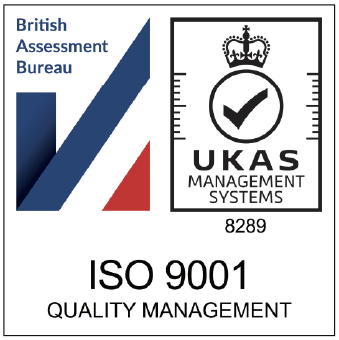The peak selling season for eCommerce retailers is nearly upon us – which means plenty of sales. Unfortunately, it can also mean plenty of returns too. Returns can be a headache, but if you plan your peak season return strategy properly, you can make your peak season smoother, keep your customers happy and improve your bottom line. So, keep reading to find out how to plan for peak season returns now…
What is the peak season?
When it comes to eCommerce sales, the majority of online stores see the largest number of their sales take place in Q4 (October to December) – this is the peak season.
Driven primarily by Christmas purchases (but also by associated dates such as Black Friday and Cyber Monday), the peak season will see your eCommerce store having to deal with a large volume of orders, and returns.
The peak season is when retailers receive the majority of their returns. A survey by Shopify asked online retailers which months they received the most returns:
- December – 3.23%.
- January – 80.65%.
- February (or later) – 4.84%.
- Unknown – 11.28%.
This period raises a number of challenges such as maintaining effective inventory management, fulfilment and shipping. So, it’s vital that you have a returns strategy in place that won’t add to the pressures on those other parts of your business.
eCommerce returns
We say that getting returns right is a crucial part of your business – but how big of an issue is it?
Let’s take a look at some stats…
- According to Shopify, 89% of consumers have returned an online purchase in the last three years.
- In some eCommerce verticals, return rates of 40% are becoming the norm.
- According to 57% of online retailers surveyed by Barclaycard, returns have a negative impact on the day-to-day running of their business.
- Your return policy will have a big impact on your sales conversion rate. A Metapack survey found that 56% of consumers will be put off making a purchase if they don’t like a retailer’s returns policy.
And, that’s just the tip of the iceberg! From impacting your bottom line to disrupting your operations, returns really can impact your business’ overall performance.
So, what can you do to effectively manage returns this peak season? We’ll take you through our top tips for doing just that, next.
How to effective manage eCommerce returns this peak season
When it comes to managing returns, there are a range of proactive and reactive actions you can take that’ll make the returns process far easier for you, your staff and your customers.
Below are some tried and tested methods for effectively dealing with returns during the peak season.
Minimise returns
The first, and perhaps most obvious, thing you can do is to take steps to prevent returns from occurring in the first place!
Minimising returns can involve a wide range of actions such as improving product photographs, allowing people to zoom in on product images, providing detailed product descriptions, providing sizing guides and comparisons to other similar products.
Do these things and you can significantly reduce the number of purchases which are made in error, thus reducing the number of subsequent returns.
Pack and ship items securely
Just because you’ve packed an item in a box and handed it over to a courier doesn’t mean it’ll necessarily reach the customer in the condition in which it left the warehouse.
Damage is a common reason for returns.
To reduce the number of returns, you should ensure that you have an efficient pick and pack process in place in your warehouse.
This process should include:
- The routine use of pick lists to ensure that the correct item for each order is picked.
- A thorough inspection of the item by your packing team before it is packed.
- The use of the correct size and suitably reinforced box.
- The use of suitable protective packing materials such as bubblewrap.
- The addition of fragile labels or ‘handle with care’ notices, where appropriate.
Do these things and you can reduce the number of returns you receive because an order has been damaged in transit.
Clearly communicate your returns policy
As we saw earlier, many consumers will not make a purchase if they have doubts about your returns policy.
So, set out your policy clearly and simply.
Ditch the legalese and write your returns policy in plain English. Plus, make it easy to find! Include a link to your returns policy on product pages and you’ll find that you increase conversions.
Include all essential information, such as:
- What can be returned.
- The condition items must be in to qualify for a refund.
- How long a customer has to return an item.
- Who pays for the return shipping.
- When a customer can expect to receive their refund.
Communicate these things clearly and you’ll have much happier customers!
Provide convenient return options
If you are to keep a hold of your customers, then you need to keep them happy. And, one of the best ways of keeping them happy is to offer convenient return options. Remember, a negative returns experience can put people off from using an eCommerce retailer ever again.
You should consider embedding a customer returns portal on your website, which’ll make it super easy for your consumers to initiate their returns. Other things that you can do to improve the convenience of returns is to include a return label with each order – or alternatively, make it easy for consumers to print labels off as and when suits them.
Whatever you do, you should remove barriers and make it as easy as possible to return items. This may sound counterintuitive, but in the long run, doing so will make you money.
Keep customers informed about their return
With the pressures of peak season, it may be tempting to overlook communication but to ensure your returns process keeps customers happy, you need to ensure that customers are continually updated on the status of their return.
To do this, find a shipping carrier or 3PL that is able to offer tracking information. Many will offer tracking numbers for customers so they can see when you have received their return. Where possible, you should also provide an ETA on when a customer will receive their funds.
Process refunds as quickly as you can
Whilst this may depend on your cash flow and overall funds at hand, you should try and process refunds as quickly as possible. We know this can be particularly difficult during peak season when you’re dealing with a high volume of transactions, but your customers will thank you for it.
This may seem counterintuitive, but a fast refund process can be good for your business. How? Because processing refunds quickly frees up customer funds to allow them to spend again (hopefully with you), whilst also allowing faster selling lines to be put back on sale quickly.
Invest in reverse logistics
Returns don’t have to equal lost revenue. In fact, if you invest intelligently in reverse logistics you can improve the net margin on returned items.
There are a few reverse logistics solutions in particular which could prove useful to you during the peak season.
Cross-border returns centres
If you ship your items internationally then you’ll know that dealing with returns across borders can be a nightmare – for both you and the customer.
To solve this problem, you can use a cross-border returns centre. A cross-border returns centre will receive and hold a returned item until you receive another order for it locally. In other words, returned items are resold locally.
It’s a strategy which is working well, particularly for retailers in verticals with high percentage return rates. For example, British clothing retailer ASOS uses a cross-border returns centre in Germany to resell returned goods (rather than having to ship the items all the way back to the UK).
Predictive restocking
In a situation where you know an item isn’t damaged and can be resold, why not use predictive restocking? This involves tracking the real-time status of returned packages and putting them back into your inventory before you’ve actually received them.
This is a particularly useful strategy during peak season. If you have some very fast selling lines, then the use of predictive restocking can ensure you don’t miss out on sales.
Liquidation channels
Sometimes you can’t put an item back into inventory. Perhaps it’s been opened? Maybe it’s very slightly damaged?
In this situation, many retailers will simply destroy or recycle the item. But, there’s another way!
By using liquidation channels you can recover more profit from these items. Liquidation channels can include everything from selling items on eBay through to selling items in bulk to discount retailers.
Use a 3PL
Finally, one of the most effective ways of planning for peak season returns is to team up with a 3PL.
By teaming up with a 3PL you’ll let them handle your returns for you, leaving you to get on with what you do best – marketing and selling your products!
Rethink your returns with 3PL
Here at 3PL we can help you create a seamless returns experience for your customers. Partner with 3PL for your returns management and you’ll benefit from:
- Real-time reporting and analysis – helping you to identify common trends from faulty goods or poorly fitting items for supplier review.
- Quality control – returned items are logged upon processing and quality checked to meet your specific criteria for refund processing and restocking.
- Disposal – returned items that aren’t deemed fit for resale are processed in a controlled manner via a destruction order, ensuring safe and tight control of all defective goods for added peace of mind.
So, if you want your returns process to run as smoothly this peak season, speak to 3PL.
Speak to 3PL about your returns process today
For more eCommerce business, marketing and fulfilment advice, read the 3PL blog…
Rethinking Returns: Why Return Policies Are Vital For a Good Customer Experience | How to Best Manage Returns for Your eCommerce Store | How to Get Your eCommerce Store Ready For the Peak Selling Season
Speak to 3PL about your order fulfiment
It’s time to supercharge your business and overtake your competitors. Speak to 3PL today and find out how we can take your ecommerce and B2B fulfilment to the next level.


